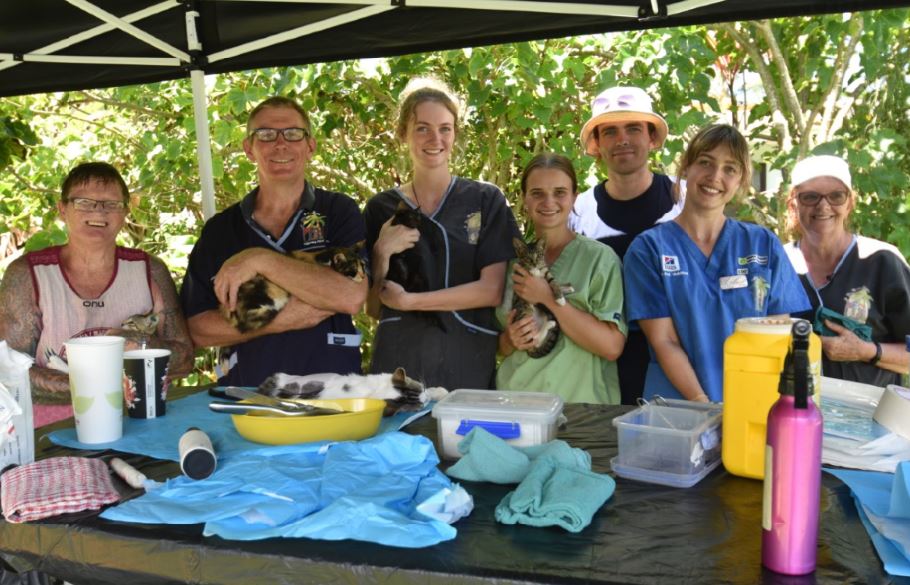Pet talk: Kitten season is on the way
Wednesday 2 August 2023 | Written by Supplied | Published in Opinion, Pet Talk

From left: Paws and the Claws Cat Sanctuary manager Shannon Paul with Te Are Manu medical director Michael Baer and other veterinarians with some of the cats and kittens that were de-sexed earlier this year. LOSIRENE LACANIVALU/23012520
I really love this time of year. The whales are here and put on a show for anyone who wants to see them. They jump, roll, slap their tails; generally, they just seem to be having fun, writes Dr Michael Baer, Te Are Manu Vet Clinic medical director.
It is a bit annoying when all you see is the splash. Especially if you couldn’t sleep because a cat was wailing outside your window all night last night. Why were they doing that? Kitten season.
Cats are long day length breeders. That means that they have kittens in spring and summer, as the days become longer. In places where day length is very different in summer than winter, like New Zealand, or Northern Europe, almost no kittens are born in winter. This makes sense, the food sources for the mothers are pretty limited if there is two metres of snow on the ground and the small animals are all hibernating. Rarotonga doesn’t have those extremes, so kittens are born year-round. But we still have a kitten season.
More kittens are born between October and March than during the other months. And because the period from mating to birth is 63 days (nine weeks) that means the mating season starts in August. Which means lots of cats wailing outside your window all night. And they are not quiet.
Cats have an interesting reproductive strategy, they are induced ovulators. This means that mating is required for the female cat to release the eggs from her ovaries. This means that the energy required for ovulation is only spent when pregnancy is likely. Queens (the term for female cats) remain on heat for 4-7 days and may mate with several Toms during this time. Usually mating will result in pregnancy, but if it does not, the queen will be back in season two to three weeks later. After birth, queens may come back in heat as soon as two days after giving birth; and get pregnant again.
To add to the chance of too many cats being born, kittens can get pregnant as early as four months old. That means that a kitten born in October can have kittens herself in April.
All of this adds up to lots and lots of cats. Some of whom will find loving homes, the rest face an uncertain future. But there is a solution! Desexing. Desexing means no kittens can be born. Desexing means male cats fight less, spray less and are less likely to contract FIV, a viral disease that causes long term health problems. Desexing means no unwanted kittens.
We can desex your cat at the clinic. Paws’N’Claws host desexing days at their shelter in Matavera. We, and Paws’N’Claws, have cages and traps you can borrow. Take advantage and avoid unwanted kittens. And avoid cats wailing outside your window all night.














































